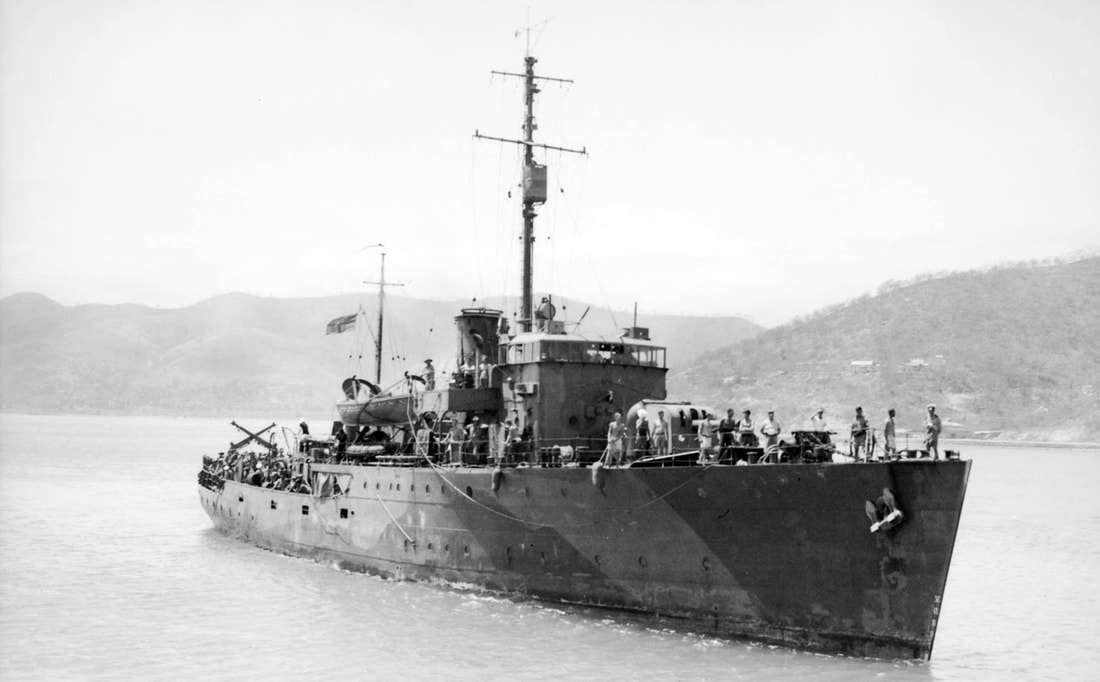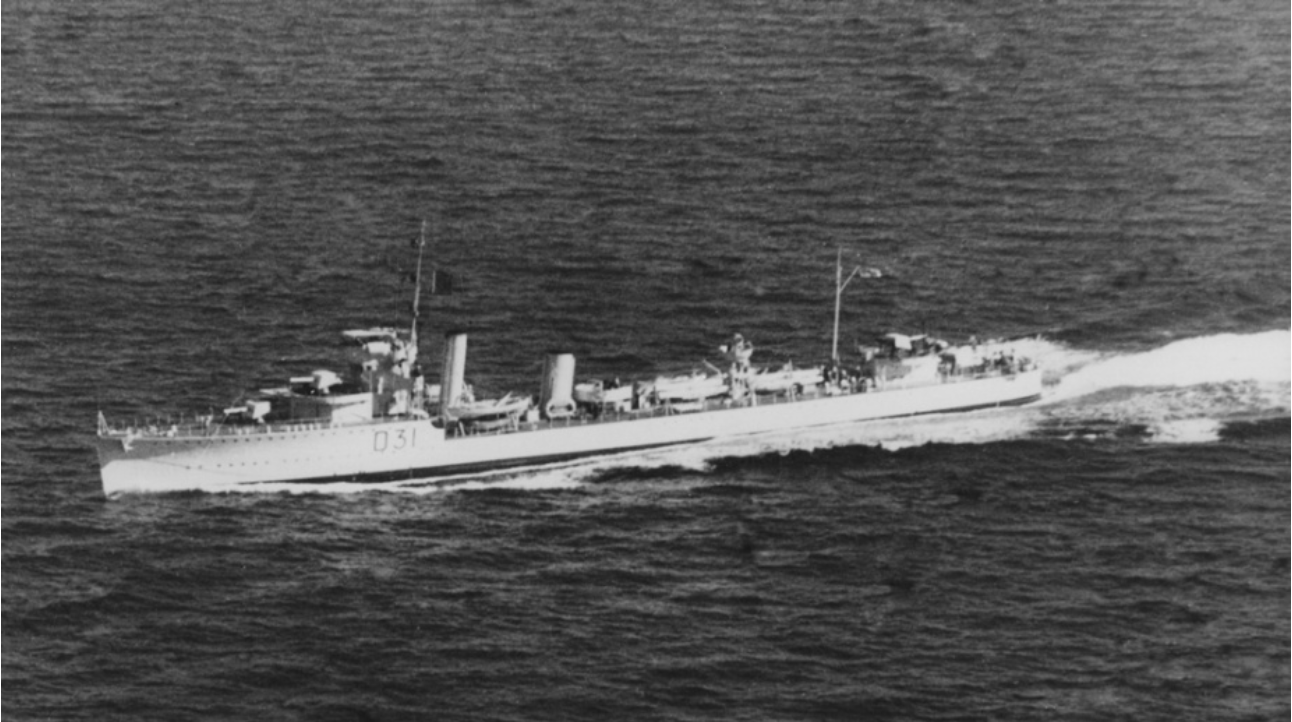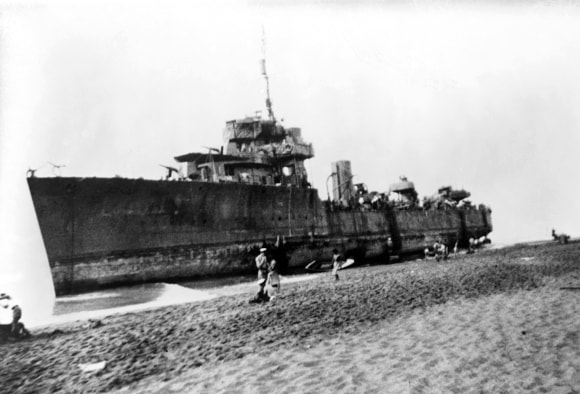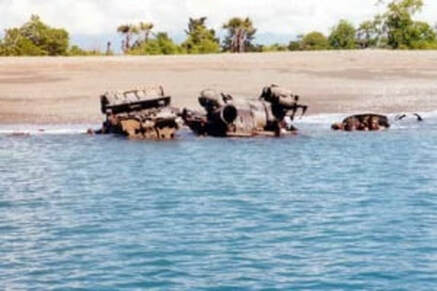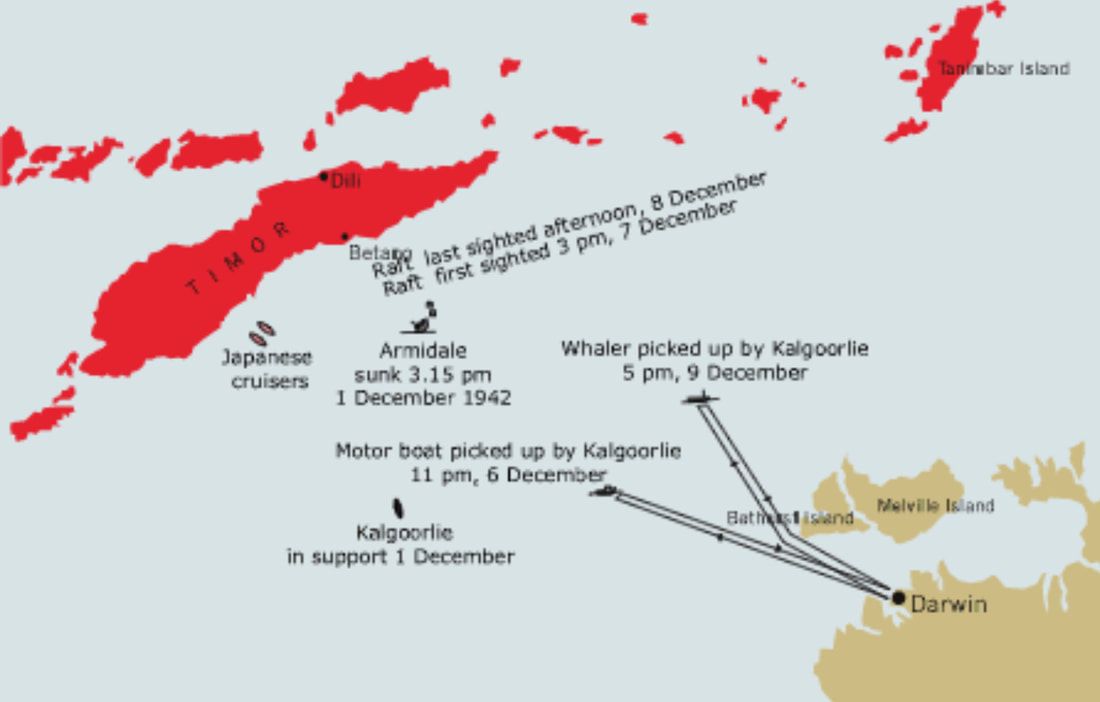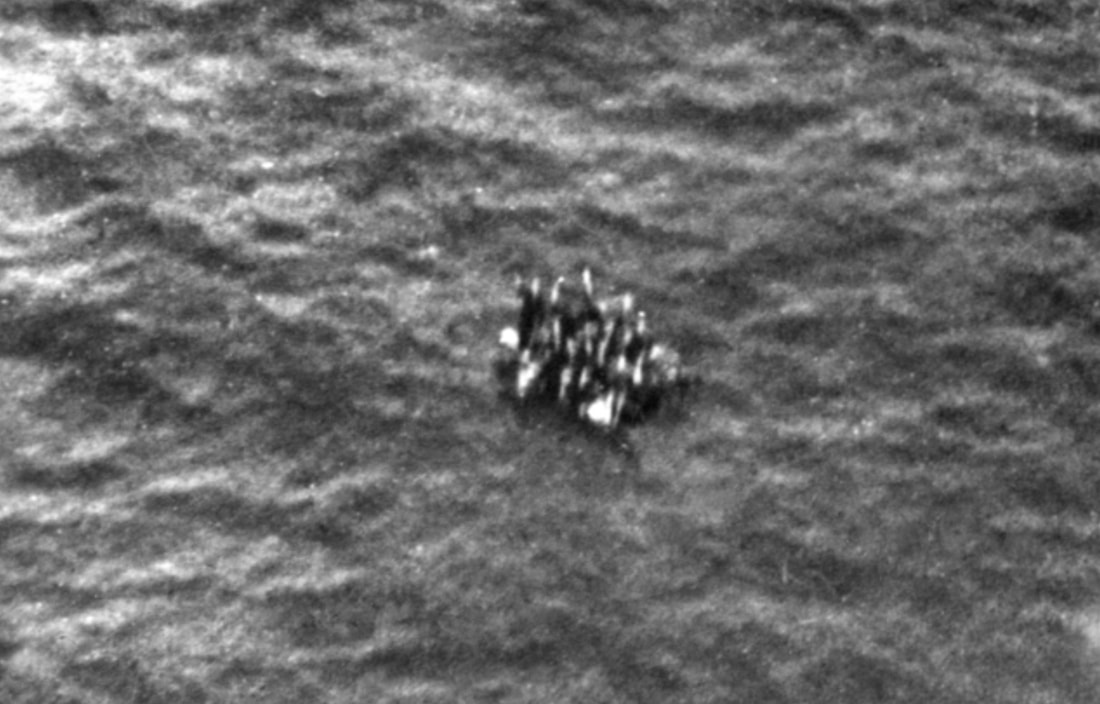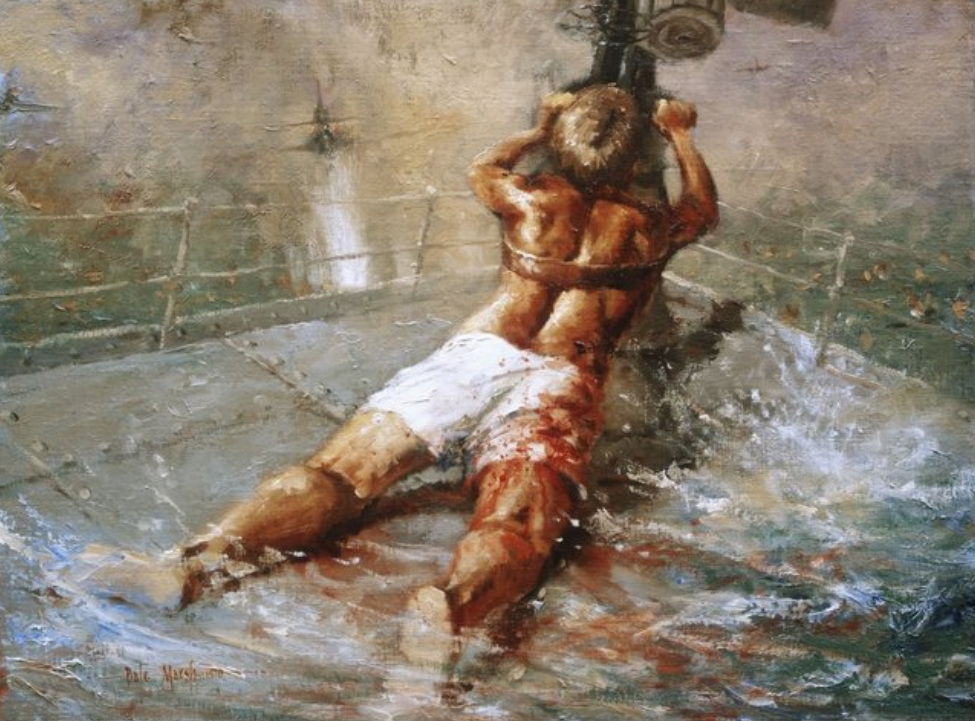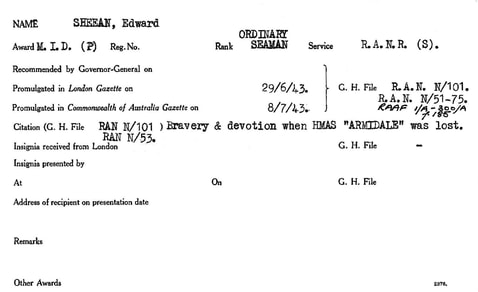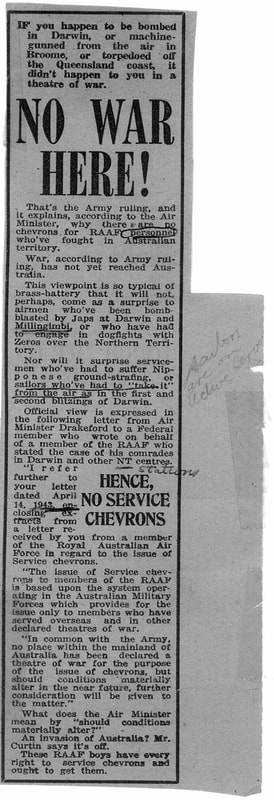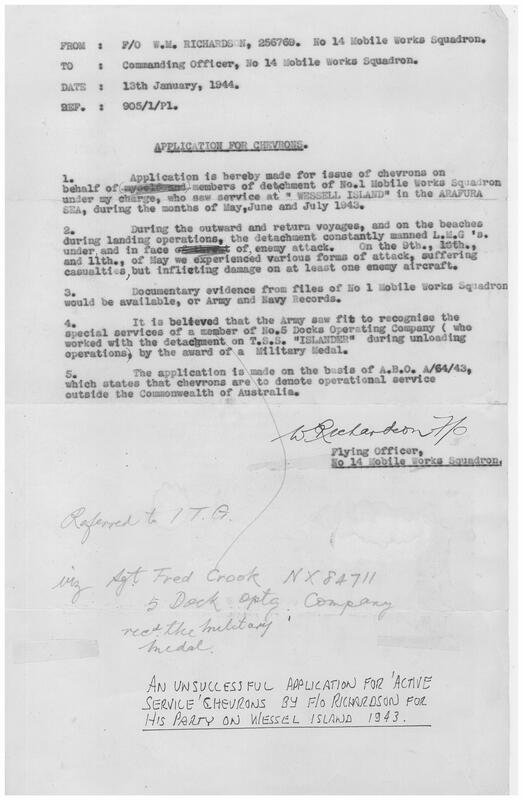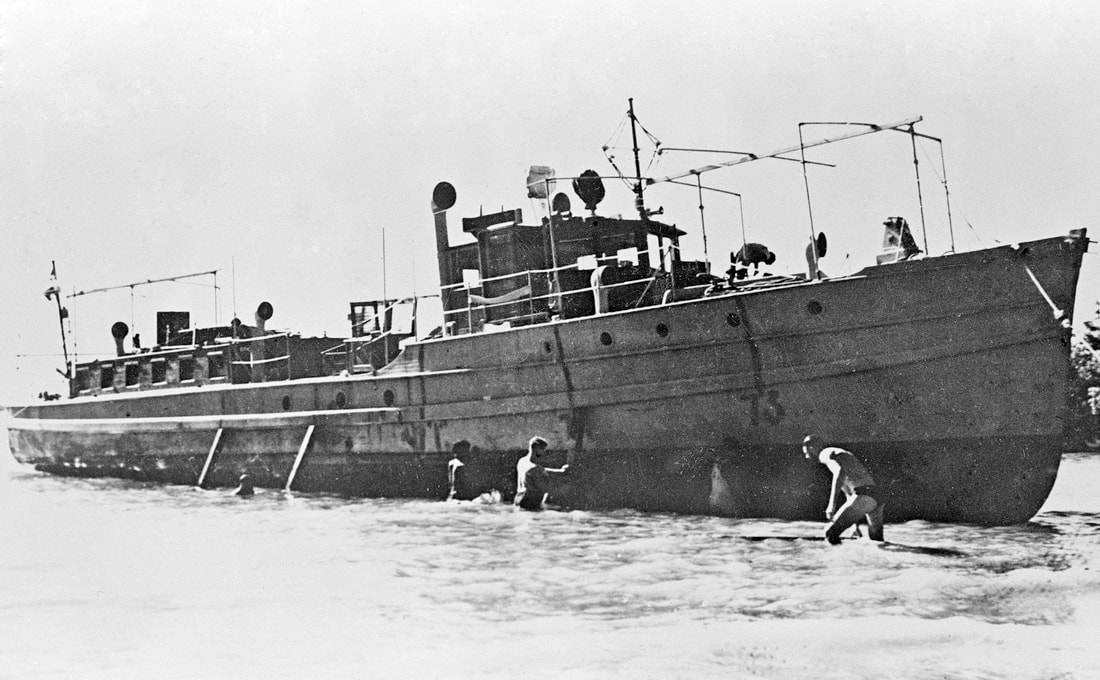The Loss of HMAS Armidale
Built at Mort's Dock Sydney and launched on 24th January 1942 the Corvette - minesweeper - held the motto Stand Firm but by 1st December 1942 she was at the bottom of the Timor Sea and a 100 men had lost their lives. For HMAS Kuru - also out of Port Darwin - this would be her finest hour.
The 1st Voyager Disaster
The Armidale was on the Timor Run because a major problem with Betano Bay as a supply point on Portuguese East Timor was the distance from Darwin and proximity of Japanese airfields which necessitated overnight operations so that vessels were more than fifty miles off the coast by daylight. Very few vessels had the speed to meet this imperative occasioned by the loss of the Glasgow built WW1, Destroyer D31, HMAS Voyager, on 23rd September 1942. She ran aground in Betano Bay on dusk whilst attempting to land 250 reinforcements for Sparrow Force. Spotted by Japanese reconnaissance aircraft she was repeatedly bombed and eventually scuttled before the ship's company was evacuated by Kalgoorlie & Warrnambool on 25th of September - one less member of the Scrap Iron Flotilla.
In December 1942 HMAS Kuru was sailing in company with HMAS Armidale & HMAS Castlemaine to resupply Sparrow Force and evacuate troops & civilians from Betano Bay, on the southern coast of Timor. Armidale & Castlemaine were spotted by Japanese reconnaissance planes and repeatedly attacked during the crossing so missed the rendezvous with Kuru which had been ashore and collected Portuguese refugees before heading back to sea. Some 110kms off the coast they met and transferred the passengers to Castlemaine which headed for Darwin.
In broad daylight and their presence known to the enemy, the Armidale & Kuru were ordered by Darwin command to continue the operation in daylight. The presence of two Japanese cruisers sealed Armidale's fate and at 3.15pm on the 1st December 1942 she succumbed to aerial bombardment and sank. Of the 149 aboard, the Captain and 21 crew managed to coax and row a small motor launch half way to Darwin whilst 29 others set out in the ship's whale boat and were eventually picked up north of Bathurst Island. The other survivors took to a raft and were photographed by search aircraft but not recovered. One hundred men lost their lives in the worst Corvette sinking of WW2.
In broad daylight and their presence known to the enemy, the Armidale & Kuru were ordered by Darwin command to continue the operation in daylight. The presence of two Japanese cruisers sealed Armidale's fate and at 3.15pm on the 1st December 1942 she succumbed to aerial bombardment and sank. Of the 149 aboard, the Captain and 21 crew managed to coax and row a small motor launch half way to Darwin whilst 29 others set out in the ship's whale boat and were eventually picked up north of Bathurst Island. The other survivors took to a raft and were photographed by search aircraft but not recovered. One hundred men lost their lives in the worst Corvette sinking of WW2.
Ordinary Seaman Edward Sheean MID
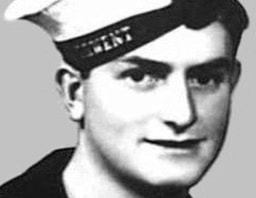
'Edward Sheean (1923-1942) - enlisted in the Royal Australian Naval Reserve in April 1941 as an ordinary seaman at Flinders Naval Depot, Westernport, Victoria.
In May 1942 he was billeted at Garden Island in the requisitioned ferry Kuttabul, prior to joining his first ship as an Oerlikon anti-aircraft gun-loader. On shore leave, he was not aboard the Kuttabul when Japanese submarines sank her on 31 May. Eleven days later he returned to Sydney to help commission the new corvette H.M.A.S. Armidale, which arrived in Darwin in early next November.
On 29 November Armidale sailed for Japanese-occupied Timor—in company with the corvette H.M.A.S. Castlemaine—to withdraw the exhausted Australian 2nd/2nd Independent Company, evacuate about 150 Portuguese civilians and 190 Dutch troops, and land soldiers to reinforce Dutch guerrillas on the island.
Arriving off Betano before dawn on 1 December, the ships made rendezvous with the naval tender H.M.A.S. Kuru, which had already taken the civilians on board. When these people were transferred to Castlemaine, she sailed for Darwin, leaving the other two vessels to carry out the rest of the operation. From 12.28 p.m. Armidale and Kuru came under repeated attack from Japanese aircraft. Despite requests, no air cover was received.
Shortly before 2 p.m. on 1 December 1942 Armidale, by then separated from Kuru, was attacked by no less than thirteen aircraft. The corvette manoeuvred frantically. At 3.15 a torpedo struck her port side and another hit the engineering spaces; finally a bomb struck aft. As the vessel listed heavily to port, the order was given to abandon ship. The survivors leapt into the sea and were machine-gunned by the Japanese. Once he had helped to free a life-raft, Sheean scrambled back to his gun on the sinking ship. Although wounded in the chest and back, the 18-year-old sailor shot down one bomber and kept other aircraft away from his comrades in the water. He was seen still firing his gun as Armidale slipped below the waves. Only forty-nine of the 149 souls who had been on board survived the sinking and the ensuing days in life-rafts.
Sheean was 'Mentioned in Dispatches' for his bravery. A Collins-class submarine, launched in 1999, was named after him—the only ship in the R.A.N. to bear the name of an Ordinary Seaman'. [Source - Watson N. Australian Dictionary of Biography]
In May 1942 he was billeted at Garden Island in the requisitioned ferry Kuttabul, prior to joining his first ship as an Oerlikon anti-aircraft gun-loader. On shore leave, he was not aboard the Kuttabul when Japanese submarines sank her on 31 May. Eleven days later he returned to Sydney to help commission the new corvette H.M.A.S. Armidale, which arrived in Darwin in early next November.
On 29 November Armidale sailed for Japanese-occupied Timor—in company with the corvette H.M.A.S. Castlemaine—to withdraw the exhausted Australian 2nd/2nd Independent Company, evacuate about 150 Portuguese civilians and 190 Dutch troops, and land soldiers to reinforce Dutch guerrillas on the island.
Arriving off Betano before dawn on 1 December, the ships made rendezvous with the naval tender H.M.A.S. Kuru, which had already taken the civilians on board. When these people were transferred to Castlemaine, she sailed for Darwin, leaving the other two vessels to carry out the rest of the operation. From 12.28 p.m. Armidale and Kuru came under repeated attack from Japanese aircraft. Despite requests, no air cover was received.
Shortly before 2 p.m. on 1 December 1942 Armidale, by then separated from Kuru, was attacked by no less than thirteen aircraft. The corvette manoeuvred frantically. At 3.15 a torpedo struck her port side and another hit the engineering spaces; finally a bomb struck aft. As the vessel listed heavily to port, the order was given to abandon ship. The survivors leapt into the sea and were machine-gunned by the Japanese. Once he had helped to free a life-raft, Sheean scrambled back to his gun on the sinking ship. Although wounded in the chest and back, the 18-year-old sailor shot down one bomber and kept other aircraft away from his comrades in the water. He was seen still firing his gun as Armidale slipped below the waves. Only forty-nine of the 149 souls who had been on board survived the sinking and the ensuing days in life-rafts.
Sheean was 'Mentioned in Dispatches' for his bravery. A Collins-class submarine, launched in 1999, was named after him—the only ship in the R.A.N. to bear the name of an Ordinary Seaman'. [Source - Watson N. Australian Dictionary of Biography]
Wyndham Richardson's Records
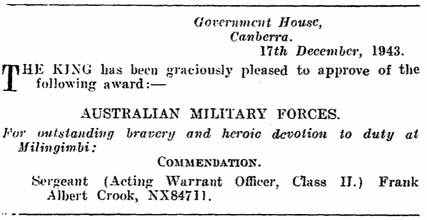 Citation for Sgt. Frank Crook NX84711
Citation for Sgt. Frank Crook NX84711
F.O. Wyndham Richardson was a surveyor with the RAAF and worked on airfields across the Top End and overseas. He was present during these actions and sought recognition in the form of Chevrons which were readily provided to those who saw action overseas but not in Australia as this article relates.
In Richardson's letters, below, to his CEO of 14 Mobile Works Squadron he is requesting chevrons for those who saw action in the Wessel islands and notes the awarding of the Military Medal to Sergeant Fred Crook NX84711 of 5th Dock Operating Comp "who worked with the detachment on T.S.S. "Islander" during unloading operations" in which the Maroubra was sunk off Milingimbi.
Richardson's account of the engagement at Milingimbi does not detail Crook's meritorious action except to note the awarding of the medal.
In Richardson's letters, below, to his CEO of 14 Mobile Works Squadron he is requesting chevrons for those who saw action in the Wessel islands and notes the awarding of the Military Medal to Sergeant Fred Crook NX84711 of 5th Dock Operating Comp "who worked with the detachment on T.S.S. "Islander" during unloading operations" in which the Maroubra was sunk off Milingimbi.
Richardson's account of the engagement at Milingimbi does not detail Crook's meritorious action except to note the awarding of the medal.
HMAS Kuru's Finest Hour
"Kuru was the first to be sighted by searching enemy aircraft - forty-four of them dropped over 200 bombs as well as strafing her. Grant threw her violently from side to side and by some extraordinary dispensation of fate all the bombs missed.
One stick of bombs fell so that Kuru fitted neatly between them. The bomb which fell astern scored a direct hit on the barge which she was towing. The concussion set off a chiming clock in the wheelhouse prompting the quartermaster to yell defiantly, 'Good on you, Tojo; you rang the bloody bell. Give the man a cigar." (John Leggoe - Trying to be Sailors') n.b. Ringing the mess bell signalled a round of drinks on the culprit - a tradition still respected today.
One stick of bombs fell so that Kuru fitted neatly between them. The bomb which fell astern scored a direct hit on the barge which she was towing. The concussion set off a chiming clock in the wheelhouse prompting the quartermaster to yell defiantly, 'Good on you, Tojo; you rang the bloody bell. Give the man a cigar." (John Leggoe - Trying to be Sailors') n.b. Ringing the mess bell signalled a round of drinks on the culprit - a tradition still respected today.
